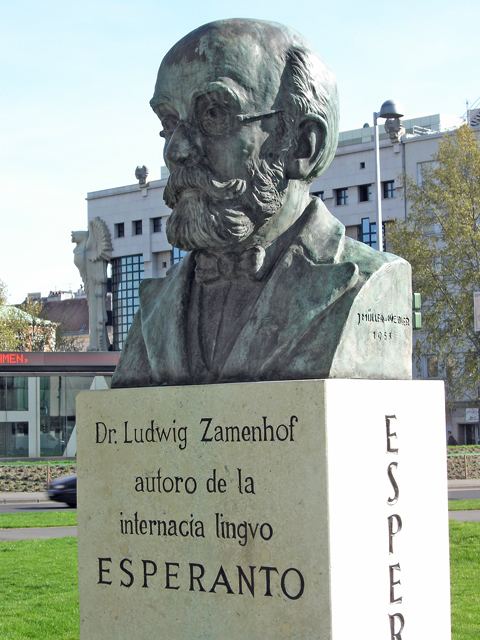 | ||
A Zamenhof-Esperanto object (in Esperanto Zamenhof/Esperanto-Objekto, abbreviation ZEO) is a monument or a place linked to L. L. Zamenhof, the artificial language Esperanto he created in 1887, or the community of Esperanto speakers which has been using the language since.
Contents
Types of objects
Zamenhof-Esperanto objects are streets, memorials, other public spaces such as squares, parks or bridges. Zamenhof or Esperanto sometimes appear also in the names of buildings and companies such as hospitals, hotels or translation agencies. There have also been vehicles, such as zeppelins, ships and trains named after Zamenhof or Esperanto, and some species, rivers, islands, asteroids and other natural discoveries bear such names too. Even postage stamps or a computer virus commemorating Zamenhof or Esperanto are considered ZEOs.
History of Zamenhof-Esperanto objects and their registration
The first Zamenhof-Esperanto object ever was a ship called Esperanto, which was constructed and launched in Spain in 1896, nine years after the language's birth. The 1934 Encyclopedia of Esperanto gives a list of approximately 54 towns and cities in which Esperanto or Zamenhof have been honored in this way. In 1997, a German Esperantist, Hugo Röllinger, published a book titled Monumente pri Esperanto – ilustrita dokumentaro pri 1044 Zamenhof/Esperanto-objektoj en 54 landoj ("Monumentally about Esperanto – an illustrated documentary of 1044 Zamenhof-Esperanto objects in 54 countries") and until his death in 2001 he listed a total of 1260 such objects. It is he who coined the acronym ZEO. Currently, Robert Kamiński of Poland is the person charged with the registration of ZEOs by the World Esperanto Association.
Notable ZEOs
The highest number of ZEOs per country is situated in Brazil. In Poland, the birthplace of Esperanto, there are more than a hundred of them.
